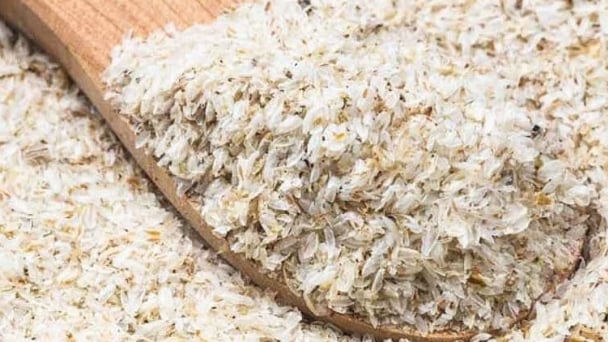May 29, 2025 | 15:57 GMT +7
May 29, 2025 | 15:57 GMT +7
Hotline: 0913.378.918
May 29, 2025 | 15:57 GMT +7
Hotline: 0913.378.918

It was the third time the USDA made an upward adjustment on its allocation for soybean oil exports since the marketing year for the product began on Oct. 1, 2024.
In the Jan. 10 World Agricultural Supply and Demand Estimates (WASDE) report, the Department raised its forecast for the 2024-25 US soybean oil exports to 1.6 billion pounds, up 46% from the December projection, up 159% from the 2023-24 estimate and up 323% from 2022-23.
Helping offset the increase in exports, the USDA lowered its allocations for biofuel usage to 13.6 billion pounds, down from 14 billion pounds previously. Also, the Department increased from December its soybean oil production to 28.68 billion pounds, up 75 million pounds, and raised its projected imports to 550 million pounds, up 50 million pounds.
After reshuffling allocations and inputs, there were some pounds leftover to add to the ending stocks supply, with the USDA raising its forecast for the carryover of soybean oil on Oct. 1, 2025, to 1.531 billion pounds, up 25 million pounds from its December outlook and up 30 million pounds from the 2024 estimate.
“As expected, the USDA had to increase exports,” said Brian Harris, executive director and owner, Global Risk Management. “It was again offset to keep stocks near unchanged, this time mostly by taking biofuel use down as usage in Q1 is expected to be slow due to uncertainty over biofuel policy moving forward.”
It was the third time the USDA made an upward adjustment on its allocation for soybean oil exports since the marketing year for the product began on Oct. 1, 2024. In the Oct. 11 WASDE, the Department forecast 2024-25 US soybean oil exports at only 600 million pounds, which was near the prior year’s export estimate of 650 million pounds but still well above 2022-23 exports of 378 million pounds. The Department left its export forecast unchanged in the November WASDE, but then it nearly doubled the outlook in the December report, bringing it to 1.1 billion pounds, and then raising it again to 1.6 billion pounds in January.
The repetitive adjustments in such a short timeframe indicates the USDA may not have anticipated the United States returning to the global stage as a major supplier of soybean oil. Due to strong domestic demand, especially from biofuel manufacturers, the United States became a net importer of the product for the first time in 2022-23 and remained a net importer in 2023-24. But a sharp, and somewhat surprising, surge in demand for US soybean oil at the start of the 2024-25 season has, at least for now, altered that scenario.
In early November, the USDA reported export sales for the week ended Oct. 31 had reached 114,300 tonnes, a total that was more than double trade expectations and the highest weekly total for any month since November 2012. Just three weeks later, export sales surpassed that 12-year high, soaring to 124,800 tonnes. And while export totals in ensuing weeks pulled back from the highs, they continued at a robust pace, averaging more than 29,000 tonnes a week during the first three months of the 2024-25 marketing year. Based on data from the USDA, exports of US soybean oil in 2023 averaged less than 3,000 tonnes per week, about a tenth of the current rate.
Multiple global factors have spurred this renewed interest in US soybean oil supplies, but the primary driver is likely the recent jump in palm oil prices that have surged to multi-year highs. Palm oil is the most consumed vegetable oil in the world, and it is typically priced at a steep discount compared with other edible oils during the fall and winter months. But concerns about limited supplies amid higher demand to satisfy new domestic policies in Indonesia, the world’s top supplier of palm oil, have elevated prices to sharp premiums over other global vegetable oils, including US soybean oil.
While palm oil prices have advanced, US soybean oil prices have declined. According to price data collected by Sosland Publishing Co., cash soybean oil at the start of this month was priced at 38.75¢ a pound, basis Decatur, Illinois, US, about 24% lower compared with 50.75¢ a pound during the same week a year earlier. And the declines have attracted buyers. India, for instance, is the world’s leading importer of palm oil, but it has diverted some of its import purchases to the United States and is currently the top buyer of US soybean oil supplies.
In its Jan. 10 Oilseeds: World Markets and Trade report, the USDA attributed part of the decline in soybean oil prices to the record daily crush rate in the United States, fueled by the massive 2024 US soybean crop. Also, uncertainty about biofuel policies with the incoming Trump administration has kept buyers on the sidelines, which has limited price gains.
But low prices and robust export sales may not be sustainable for the US soybean oil market. While the USDA raised its export projections for the product in the January WASDE, it also slashed its estimated soybean production for 2024 in the Jan. 10 annual Crop Production report to 4.366 billion bushels, down 2.1% from 4.461 billion bushels estimated in the November Crop Production report, and below the range of pre-report trade expectations. The USDA in the latest WASDE also sharply dropped the carryover of soybeans on Sept. 1, 2025, to 380 million bushels, down 90 million bushels, or 19%, from December and also well below the range of analysts’ expectations. Since these January reports, both CME soybean and soybean oil futures have shot precipitously higher.
The main determinant, however, for the future of not only US soybean oil exports but nearly all agricultural commodities, will be the implementation of domestic and foreign policies implemented by the Trump administration, which may include tariffs on US soybean exports to China.
(WG)

(VAN) Vietnamese shrimp exporters are actively looking for alternative markets and accelerating shipments to the United States in response to the pressure of impending reciprocal tariffs. This is occurring during a temporary tariff suspension.

(VAN) The import-export turnover between Vietnam and Singapore rose amid a trade rebound, with machinery, electrical equipment, and fuels making up the majority of the transaction value.

(VAN) Director General of the General Administration of Customs of China, Ms. Sun Mai Jun, has pledged to implement measures that will ease the import process for Vietnamese agricultural products.

(VAN) Although Vietnam is still increasing its coffee exports, the industry is currently in the process of determining market strategies in response to the U.S. imposition of reciprocal tariffs.

(VAN) With rising demand in Muslim-majority countries, Halal certification is becoming a critical passport for Vietnamese agricultural products seeking sustainable market access and consumer trust in the Middle East and Africa.

(VAN) Vietnam’s fruit and vegetable exports to the U.S. are rising sharply, and exporters are hoping that any upcoming reciprocal tariffs will be set at manageable levels.

(VAN) Despite meeting quality standards, Vietnamese rice bran exporters still face difficulties with administrative procedures under the new protocol.